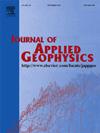北阿坎德邦喜马拉雅山脉普兰马蒂盆地临界区基岩和风化岩的地球物理特征描述
IF 2.2
3区 地球科学
Q2 GEOSCIENCES, MULTIDISCIPLINARY
引用次数: 0
摘要
年轻活跃的喜马拉雅山的特点是坡度陡峭,地形纵横交错,整体构造呈挤压状。山地带的土壤主要质地粗糙,持水能力差,极易受到侵蚀。水土流失不仅会影响下游的许多生态系统,还会对临界区(CZ)产生不利影响。在本研究中,我们在小喜马拉雅山的喜马拉雅临界区 Alaknanda 盆地的 Pranmati 流域进行了直流电阻率研究,通过分析基岩结构和岩石厚度,了解土壤侵蚀、搬运和沉积的模式。在集水区的两个地点共绘制了 6 个电阻率层析成像图(ERT)剖面图,一个位于平原草地,另一个位于 25°山坡上的农作物田。研究区域位于 Baijnath klippe,由石英-生物岩片麻岩和被推力断层包围的石英云母-片麻岩层组成。下坡草原地点的电阻率剖面图显示,西南和东北横断面之间的电阻率对比鲜明,表明基岩的倾角向东南方向增大,与东北朝向的地表地形和厚厚的风化岩(> 10 米)相斜。位于山坡上的地点的电阻率断面上有一层很薄的碎屑岩(2 米),表明土壤侵蚀严重,基岩风化程度高。我们认为,地下水循环促进了多孔岩石中的水岩相互作用,这可能是厚层岩石的潜在来源。观测结果证实了现有的关于深部临界区演变和发展的假设。根据观测结果提出的假设是,基岩结构和临界区内的水道路径共同控制着碎屑岩的厚度。本文章由计算机程序翻译,如有差异,请以英文原文为准。
Geophysical characterization of the bedrock and regolith in the Pranmati basin critical zone, Uttarakhand Himalaya
The young active Himalayan mountain is characterized by steep slope and dissected topography in overall compressive tectonic setting. The mountain belt has primarily coarse textured soil with poor water holding capacity and is highly prone to erosion. The erosion not only affects many ecosystems located at downstream but also has detrimental effects on the critical zone (CZ). In the present study, we have carried out DC electrical resistivity study in the Pranmati catchment of the Alaknanda basin, a Himalayan critical zone in the Lesser Himalaya, to understand the pattern of soil erosion, transportation and deposition by characterizing the bedrock architecture and hence regolith thickness. A total of 6 electrical resistivity tomogram (ERT) profiles were laid at two locations in the catchment, one in a plain grassland and another at a crop field located on a hill slope of >25o. The study area in the Baijnath klippe, consists of quartz-biotite gneisses with layers of quartz mica-schist enclosed by thrust faults. Electrical resistivity sections of the downslope grassland site show a sharp resistivity contrast between the southwest and northeast transects suggesting south-eastern increase in dip of the bedrock, oblique to the north-east facing surface topography and a thick regolith (> 10 m). The resistivity sections of the site located on the hillslope yield a very thin layer of regolith (< 2 m) indicating significant soil erosion and high weathering of the bedrock. We propose that the water–rock interaction within the porous regolith facilitated by subsurface water circulation might be a potential source for the thick regolith. The observations substantiate existing hypotheses for the evolution and development of deep critical zones. From the results, it has been hypothesized that the bedrock architecture and water channel paths within the CZ together control the regolith thickness.
求助全文
通过发布文献求助,成功后即可免费获取论文全文。
去求助
来源期刊

Journal of Applied Geophysics
地学-地球科学综合
CiteScore
3.60
自引率
10.00%
发文量
274
审稿时长
4 months
期刊介绍:
The Journal of Applied Geophysics with its key objective of responding to pertinent and timely needs, places particular emphasis on methodological developments and innovative applications of geophysical techniques for addressing environmental, engineering, and hydrological problems. Related topical research in exploration geophysics and in soil and rock physics is also covered by the Journal of Applied Geophysics.
 求助内容:
求助内容: 应助结果提醒方式:
应助结果提醒方式:


